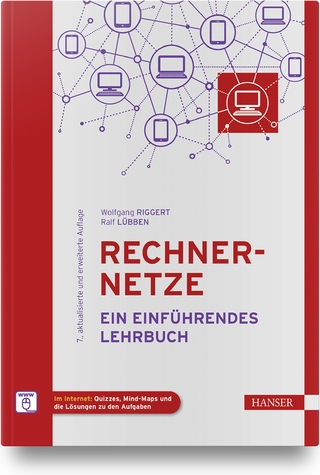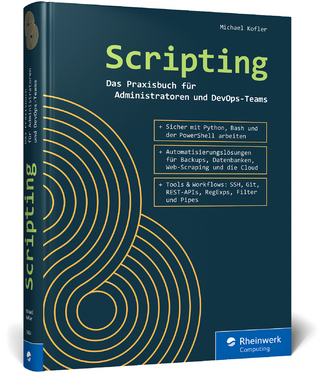
Evaluation of HSDPA and LTE
John Wiley & Sons Inc (Verlag)
978-0-470-71192-7 (ISBN)
- Titel z.Zt. nicht lieferbar
- Versandkostenfrei innerhalb Deutschlands
- Auch auf Rechnung
- Verfügbarkeit in der Filiale vor Ort prüfen
- Artikel merken
This book explains how the performance of modern cellular wireless networks can be evaluated by measurements and simulations With the roll-out of LTE, high data throughput is promised to be available to cellular users. In case you have ever wondered how high this throughput really is, this book is the right read for you: At first, it presents results from experimental research and simulations of the physical layer of HSDPA, WiMAX, and LTE. Next, it explains in detail how measurements on such systems need to be performed in order to achieve reproducible and repeatable results. The book further addresses how wireless links can be evaluated by means of standard-compliant link-level simulation. The major challenge in this context is their complexity when investigating complete wireless cellular networks. Consequently, it is shown how system-level simulators with a higher abstraction level can be designed such that their results still match link-level simulations. Exemplarily, the book finally presents optimizations of wireless systems over several cells.
This book:
Explains how the performance of modern cellular wireless networks can be evaluated by measurements and simulations
Discusses the concept of testbeds, highlighting the challenges and expectations when building them
Explains measurement techniques, including the evaluation of the measurement quality by statistical inference techniques
Presents throughput results for HSDPA, WiMAX, and LTE
Demonstrates simulators at both, link- level and system-level
Provides system-level and link-level simulators (for WiMAX and LTE) on an accompanying website (https://www.nt.tuwien.ac.at/downloads/featured-downloads)
This book is an insightful guide for researchers and engineers working in the field of mobile radio communication as well as network planning. Advanced students studying related courses will also find the book interesting.
Dr. Sebastian Caban, University of Technology Vienna, Austria Sebastian Caban finished his PhD with summa cum laude in October 2009 and is now post doctoral fellow at this institute. Christian Mehlführer, University of Technology Vienna, Austria Christian Mehlführer received his Dipl.-Ing. degree in electrical engineering from the Vienna University of Technology. In 2009, he finished his PhD about measurement-based performance evaluation of WiMAX and HSDPA with summa cum laude. Professor Markus Rupp, University of Technology Vienna, Austria Markus Rupp received his Dipl.-Ing. degree in 1988 at the University of Saarbrücken, Germany and his Dr.-Ing. degree in 1993 at the Technische Universität Darmstadt, Germany, where he worked with Eberhardt Hänsler on designing new algorithms for acoustical and electrical echo compensation. Martin Wrulich, University of Technology Vienna, Austria Martin Wrulich received his Dipl.-Ing. degree from Vienna University of Technology in March 2006 (diploma thesis: "Capacity Analysis of MIMO systems").
About the Authors xiii About the Contributors xv
Preface xvii
Acknowledgments xxiii
List of Abbreviations xxv
Part I CELLULAR WIRELESS STANDARDS
Introduction 3
References 4
1 UMTS High-Speed Downlink Packet Access 5
1.1 Standardization and Current Deployment of HSDPA 5
1.2 HSDPA Principles 6
1.2.1 Network Architecture 7
1.2.2 Physical Layer 9
1.2.3 MAC Layer 13
1.2.4 Radio Resource Management 14
1.2.5 Quality of Service Management 16
1.3 MIMO Enhancements of HSDPA 17
1.3.1 Physical Layer Changes for MIMO 19
1.3.2 Precoding 21
1.3.3 MAC Layer Changes for MIMO 25
1.3.4 Simplifications of the Core Network 26
References 26
2 UMTS Long-Term Evolution 29
Contributed by Josep Colom Ikuno
2.1 LTE Overview 29
2.1.1 Requirements 29
2.2 Network Architecture 31
2.3 LTE Physical Layer 33
2.3.1 LTE Frame Structure 34
2.3.2 Reference and Synchronization Symbols 36
2.3.3 MIMO Transmission 37
2.3.4 Modulation and Layer Mapping 39
2.3.5 Channel Coding 41
2.3.6 Channel Adaptive Feedback 45
2.4 MAC Layer 46
2.4.1 Hybrid Automatic Repeat Request 46
2.4.2 Scheduling 47
2.5 Physical, Transport, and Logical Channels 48
References 51
Part II TESTBEDS FOR MEASUREMENTS
Introduction 57
Reference 58
3 On Building Testbeds 59
3.1 Basic Idea 60
3.2 Transmitter 61
3.3 Receiver 63
3.4 Synchronization 65
3.5 Possible Pitfalls 67
3.5.1 Digital Baseband Hardware 67
3.5.2 Tool and Component Selection 68
3.5.3 Analog RF Front Ends 69
3.5.4 Cost 70
3.5.5 Matlab® Code and Testbeds 70
3.6 Summary 71
References 72
4 Quasi-Real-Time Testbedding 75
4.1 Basic Idea 75
4.2 Problem Formulation 77
4.3 Employing the Basic Idea 78
4.4 Data Collection 80
4.4.1 More Sophisticated Sampling Techniques 81
4.4.2 Variance Reduction Techniques 84
4.4.3 Bias 85
4.4.4 Outliers 86
4.4.5 Parameter Estimation 87
4.5 Evaluating and Summarizing the Data 88
4.6 Statistical Inference 90
4.6.1 Inferring the Population Mean 90
4.6.2 Precision and Sample Size 91
4.6.3 Reproducibility and Repeatability 92
4.7 Measurement Automation 95
4.8 Dealing with Feedback and Retransmissions 96
References 97
Part III EXPERIMENTAL LINK-LEVEL EVALUATION
Introduction 101
5 HSDPA Performance Measurements 103
5.1 Mathematical Model of the Physical Layer 104
5.1.1 System Model for the Channel Estimation 106
5.1.2 System Model for the Equalizer Calculation 106
5.2 Receiver 107
5.2.1 Channel Estimation 107
5.2.2 Equalizer 112
5.2.3 Further Receiver Processing 113
5.3 Quantized Precoding 113
5.4 CQI and PCI Calculation 115
5.4.1 HS-PDSCH Interference 115
5.4.2 Pilot Interference 116
5.4.3 Synchronization and Control Channel Interference 116
5.4.4 Post-equalization Noise and SINR 118
5.4.5 SINR to CQI Mapping 119
5.5 Achievable Mutual Information 121
5.6 Measurement Results 124
5.6.1 Alpine Scenario 125
5.6.2 Urban Scenario 128
5.6.3 Discussion of the Implementation Loss 130
5.7 Summary 131
References 132
6 HSDPA Antenna Selection Techniques 139
Contributed by Jos´e Antonio Garc´ıa-Naya
6.1 Existing Research 141
6.2 Receive Antenna Selection 142
6.2.1 Antenna Selection Based on System Throughput 143
6.2.2 Hardware Aspects of Antenna Selection 143
6.3 An Exemplary Measurement and its Results 144
6.3.1 Urban Scenario 144
6.3.2 Experimental Assessment of Antenna Selection in HSDPA 145
6.3.3 Measurement Results and Discussion 147
6.4 Summary 148
References 149
7 HSDPA Antenna Spacing Measurements 153
7.1 Problem Formulation 153
7.2 Existing Research 154
7.3 Experimental Setup 155
7.4 Measurement Methodology 157
7.4.1 Inferring the Mean Scenario Throughput 157
7.4.2 Issues Requiring Special Attention 158
7.5 Measurement Results and Discussion 160
7.5.1 Equal Polarization Versus Cross-Polarization 160
7.5.2 Channel Capacity 160
7.5.3 Channel Capacity Versus Mutual Information 162
7.5.4 Mutual Information Versus Achievable Mutual Information 162
7.5.5 Achievable Mutual Information Versus Throughput 163
7.5.6 Throughput 163
7.6 Different Transmit Power Levels and Scenarios 163
References 164
8 Throughput Performance Comparisons 167
8.1 Introduction 167
8.2 Cellular Systems Investigated: WiMAX and HSDPA 168
8.2.1 WiMAX and HSDPA 168
8.2.2 Throughput Bounds and System Losses 169
8.3 Measurement Methodology and Setup 172
8.4 Measurement Results 173
8.4.1 WiMAX Results 173
8.4.2 HSDPA Results in Standard-Compliant Setting 177
8.4.3 HSDPA Results in Advanced Setting 179
8.5 Summary 179
References 182
9 Frequency Synchronization in LTE 183
Contributed by Qi Wang
9.1 Mathematical Model 184
9.2 Carrier Frequency Offset Estimation in LTE 186
9.2.1 Standardized Training Symbols in LTE 186
9.2.2 Maximum Likelihood Estimators 188
9.3 Performance Evaluation 191
9.3.1 Estimation Performance 192
9.3.2 Post-FFT SINR 194
9.3.3 Post-equalization SINR and Throughput 195
References 199
10 LTE Performance Evaluation 201
Contributed by Stefan Schwarz
10.1 Mathematical Model of the Physical Layer 202
10.2 Receiver 203
10.2.1 Channel Estimation 204
10.2.2 Data Detection 205
10.2.3 Further Receiver Processing 206
10.3 Physical Layer Modeling 206
10.3.1 Post-equalization SINR 207
10.3.2 SINR Averaging 207
10.4 User Equipment Feedback Calculation 208
10.4.1 User Equipment Feedback Indicators 208
10.4.2 Calculation of the CQI, PMI, and RI 210
10.5 Practical Throughput Bounds 216
10.5.1 Channel Capacity 216
10.5.2 Open-Loop Mutual Information 217
10.5.3 Closed-Loop Mutual Information 218
10.5.4 BICM Bounds 219
10.5.5 Achievable Throughput Bounds 222
10.5.6 Prediction of the Optimal Performance 223
10.6 Simulation Results 224
10.6.1 SISO Transmission 225
10.6.2 OLSM Transmission 227
10.6.3 CLSM Transmission 229
References 230
Part IV SIMULATORS FOR WIRELESS SYSTEMS
Introduction 237
References 240
11 LTE Link- and System-Level Simulation 243
Contributed by Josep Colom Ikuno
11.1 The Vienna LTE Link Level Simulator 245
11.1.1 Structure of the Simulator 245
11.1.2 Complexity 247
11.2 The Vienna LTE System Level Simulator 250
11.2.1 Structure of the Simulator 250
11.2.2 Simulator Implementation 252
11.2.3 Complexity 253
11.3 Validation of the Simulators 255
11.3.1 3GPP Minimum Performance Requirements 257
11.3.2 Link- and System-Level Cross-Comparison 257
11.4 Exemplary Results 259
11.4.1 Link-Level Throughput 259
11.4.2 LTE Scheduling 262
References 265
12 System-Level Modeling for MIMO-Enhanced HSDPA 271
12.1 Concept of System-Level Modeling 271
12.2 Computationally Efficient Link-Measurement Model 273
12.2.1 Receive Filter 274
12.2.2 WCDMA MIMO in the Network Context 276
12.2.3 Equivalent Fading Parameters Description 278
12.2.4 Generation of the Equivalent Fading Parameters 284
12.2.5 Influence of Non-Data Channels 286
12.2.6 Resulting SINR Description 287
12.3 Link-Performance Model 288
12.3.1 Link-Performance Model Concept 289
12.3.2 Training and Validation of the Model 293
References 296
Part V SIMULATION-BASED EVALUATION FOR WIRELESS SYSTEMS
Introduction 301
13 Optimization of MIMO-Enhanced HSDPA 303
13.1 Network Performance Prediction 303
13.1.1 Simulation Setup 303
13.1.2 Single Network Scenario Investigation 304
13.1.3 Average Network Performance 306
13.2 RLC-Based Stream Number Decision 310
13.2.1 UE Decision 310
13.2.2 RLC Decision 311
13.2.3 System-Level Simulation Results 311
13.3 Content-Aware Scheduling 313
13.3.1 Video Packet Prioritization in HSDPA 313
13.3.2 Content-Aware Scheduler 314
13.3.3 Simulation Results 315
13.4 CPICH Power Optimization 316
13.4.1 System-Level Modeling of the CPICH Influence 317
13.4.2 CPICH Optimization in the Cellular Context 318
References 321
14 Optimal Multi-User MMSE Equalizer 325
14.1 System Model 326
14.2 Intra-Cell Interference Aware MMSE Equalization 330
14.2.1 Interference Suppression Capability 332
14.3 The Cell Precoding State 334
14.3.1 Training-Sequence-Based Precoding State Estimation 336
14.3.2 Blind Precoding State Estimation 337
14.3.3 Estimator Performance 339
14.4 Performance Evaluation 340
14.4.1 Physical-Layer Simulation Results 340
14.4.2 System-Level Simulation Results 341
References 343
15 LTE Advanced Versus LTE 347
Contributed by Stefan Schwarz
15.1 IMT-Advanced and 3GPP Performance Targets 348
15.2 Radio Interface Enhancements 349
15.2.1 Bandwidth Extension 349
15.2.2 Enhanced MIMO 350
15.2.3 Uplink Improvements 351
15.2.4 Beyond Release 10 352
15.3 MIMO in LTE Advanced 354
15.3.1 Codebook-Based Precoding 354
15.3.2 Non-Codebook-Based Precoding 356
15.4 Physical-Layer Throughput Simulation Results 359
15.4.1 Eight-Antenna Transmission 359
15.4.2 Comparison between LTE and LTE Advanced 363
15.4.3 Comparison of SU-MIMO and MU-MIMO 363
References 366
Index 369
| Erscheint lt. Verlag | 12.12.2011 |
|---|---|
| Verlagsort | New York |
| Sprache | englisch |
| Maße | 173 x 252 mm |
| Gewicht | 748 g |
| Themenwelt | Mathematik / Informatik ► Informatik ► Netzwerke |
| Technik ► Elektrotechnik / Energietechnik | |
| Technik ► Nachrichtentechnik | |
| ISBN-10 | 0-470-71192-2 / 0470711922 |
| ISBN-13 | 978-0-470-71192-7 / 9780470711927 |
| Zustand | Neuware |
| Haben Sie eine Frage zum Produkt? |
aus dem Bereich


